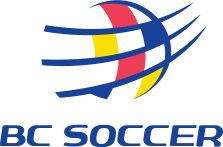

Our governing body BC Soccer has developed policies and procedures to ensure that all members clearly understand the expectations around their conduct around the game, the standard of ethics to be followed and the way in which discipline will be administered in all member clubs. Read the following documents for a detailed outline of those areas:
BC Soccer Complaints, Discipline and Appeals Procedures, November 2022
Province of BC Universal Code of Conduct Policy
BC Soccer Conduct and Ethics Policy
BC Soccer Diversity, Equity and Inclusion Policy
BC Soccer Permit to Travel Outside of BC
BC Soccer Bylaws, Rules, Regulations and Policy
BC Soccer Air Quality Guidelines
BC Soccer Extreme Heat Guidelines
BC Soccer Is Pleased To Provide Coaches With C-Licence Theory On-Line
Candidates will be able to complete the theory portion at home, and then participate in the on-field component once restrictions are eased.
January 26th 2021 - Vancouver BC

BC Soccer has opened registration for its 2021 C Licence program. Since the coronavirus pandemic, BC Soccer has offered the Community Stream theory component online for coaches across the province and now we are pleased to make the C Licence “Theory” available in this e-learning format as well.
“Providing coaches with flexible learning is key for ongoing development, especially during this pandemic,” said Rob Csabai, BC Soccer’s Manager of Coaching Development. “Our aim is to continue serving the needs of coaches, clubs, and their players through this coach education platform.”
Since the introduction of the C Licence program in 2016, BC Soccer has trained nearly 300 coaches at this level which is the gateway to Canada Soccer’s Licencing Stream Pathway. Coaches who complete the C Licence online theory component (part 1) will be eligible to register for the on-field component (part 2) once Covid restrictions have been lifted and it is safe to return to in-person workshops (TBC).
Listed below are some particular Canada Soccer documents BC Soccer and PFC would like to ensure the members and soccer community are aware of.
Canada Soccer Code of Conduct and Ethics
Canada Soccer Concussion Policy
Canada Soccer Lightning Safety/Severe Weather Policy
Soccer Canada Players Wearing Casts Policy
Canada Soccer Insulin Pump Policy
